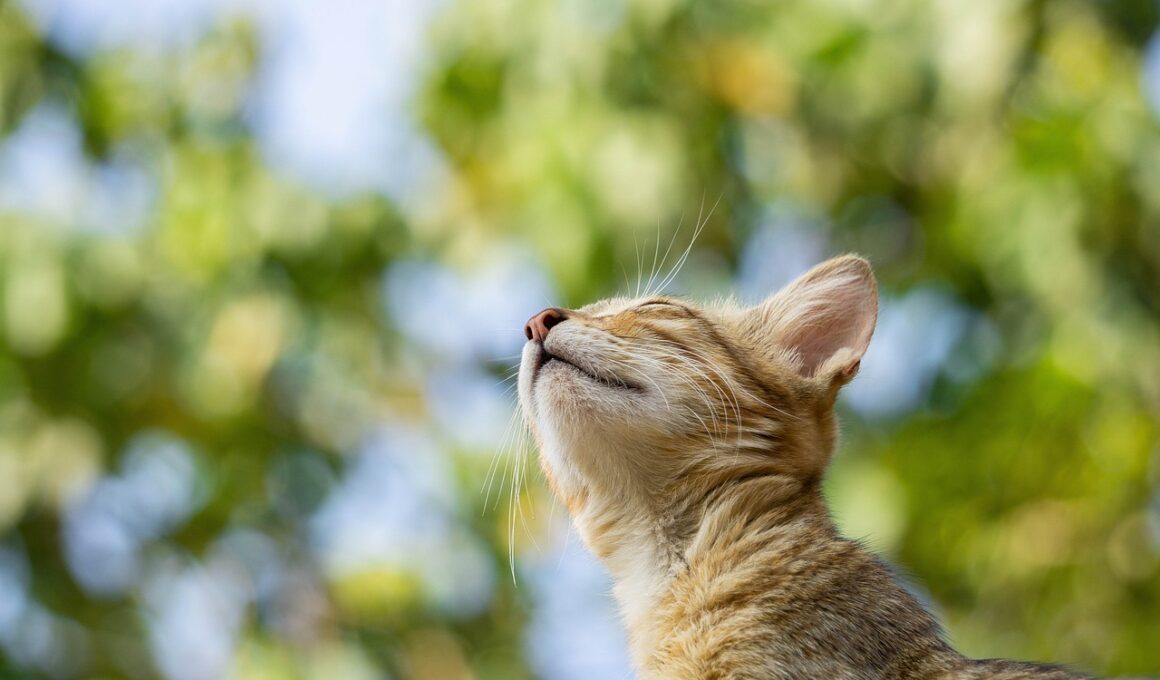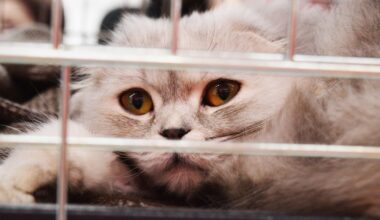The Role of Obesity in Developing Hepatic Lipidosis in Cats
Feline Hepatic Lipidosis is a serious condition that can arise due to obesity in cats, particularly those who undergo stress-induced anorexia. When cats are overweight, their bodies store excess fat, and during fasting or reduced food intake, fat is mobilized from adipose tissue. This process can overwhelm the liver, which is responsible for metabolizing fat. When excess fat enters the liver cells, they become distended, leading to hepatic lipidosis. The signs of this condition may not always be apparent initially, and often include lethargy, vomiting, and jaundice. Early detection is crucial because the prognosis markedly improves with prompt treatment. Preventative strategies focus on maintaining a healthy weight through proper diet and regular exercise. Owners should monitor their feline’s body condition, ensuring their cats receive balanced nutrition that meets their energy needs. By keeping their pets at a healthy weight, cat owners can significantly reduce the risk of developing this life-threatening liver disease. Such preventive measures are essential for cats, especially those that are prone to obesity and related metabolic disorders. Recognizing the importance of this condition is a vital part of responsible pet ownership.
Cats that are obese or overweight are at a higher risk of developing various health issues, including Hepatic Lipidosis. Obesity can lead to an accumulation of fat in the liver, resulting in impaired liver function. The role of dietary practices is significant; cats require a diet formulated for their specific needs. High carbohydrate diets, for example, can exacerbate weight gain. Additionally, the quality of protein in a cat’s diet plays a crucial role in maintaining overall health. Owners often overlook the importance of feeding a high-protein diet mixed with moderate fats to promote a healthy metabolism. Cats do not instinctively regulate their food intake in the same manner as other pets, making owner supervision critical. Portion control is a strategy that can help prevent obesity and related diseases. Furthermore, cats should be encouraged to engage in regular activity and play; sedentary cats are more likely to gain weight. Regular vet visits are essential to monitor weight and health. Cat owners should consider consulting with veterinarians about their cats’ diets and activity levels. Understanding these factors can significantly improve a cat’s quality of life and longevity, enhancing emotional bonds and overall happiness.
Understanding the Mechanisms
The mechanisms by which obesity contributes to Feline Hepatic Lipidosis are multifaceted and involve hormonal and metabolic alterations. When cats are obese, excess fatty acids are released into the bloodstream, leading to an increase in free fatty acids in the liver. This can initiate a cascade of metabolic disturbances which culminate in liver damage. Cats possess a unique metabolism; they primarily utilize fat for energy rather than carbohydrates. Therefore, an excessive intake of fat can lead to toxicity in liver cells. Furthermore, the liver’s inability to secrete adequately can cause intrahepatic cholestasis, compounding liver issues. In addition, hepatic lipidosis is often seen in conjunction with other medical conditions, such as diabetes mellitus or pancreatitis. Stressors may exacerbate this condition, causing cats to stop eating. The subsequent fasting period can rapidly trigger a buildup of fat in the liver. Considering the interplay of these mechanisms can inform prevention and treatment approaches. Understanding these factors provides a foundation for better strategies in managing feline health, especially in obesity-prone breeds. Therefore, educating cat owners on these aspects can notably improve preventive care.
The clinical signs associated with Feline Hepatic Lipidosis often emerge gradually and can range from subtle to severe. Common symptoms include weight loss, excessive thirst, and increased urination. A cat exhibiting these signs should be promptly evaluated by a veterinarian. Jaundice, or a yellowing of the skin and eyes, is another indicative symptom and may signal advanced liver dysfunction. As the condition progresses, affected cats may become lethargic and lose their appetite entirely. Blood tests can confirm the diagnosis, alongside imaging techniques like ultrasound. Upon diagnosis, immediate intervention becomes essential; this may include nutritional support through feeding tubes if the cat refuses food. Common treatment protocols focus on re-establishing a healthy nutrient intake while addressing any underlying illness. Monitoring liver function through periodic blood tests is crucial during recovery. The prognosis for cats diagnosed early with this condition is often favorable, provided they receive proper treatment. Nevertheless, prognosis may deteriorate for those presenting late. Owners need to remain vigilant for early signs and maintain regular veterinary check-ups. Through awareness and proactive care, the severity of this condition can be lessened.
Preventive Measures and Management
Preventing Feline Hepatic Lipidosis is heavily reliant on responsible pet ownership and proactive health management. One of the most effective preventive strategies is weight management. Regular weigh-ins and body condition scoring are valuable practices for monitoring a cat’s weight. It’s essential to implement a balanced diet that aligns with each cat’s age, activity level, and overall health status. Cat food should be rich in protein and low in carbohydrates, mirroring their natural dietary needs. Additionally, encouraging physical activity is vital; playtime not only helps to burn calories but also strengthens the bond between the cat and its owner. Using interactive toys can be beneficial. In addition to dietary modifications and exercise, owners should develop an understanding of their pets’ behaviors and signs of distress, as stress-related changes can precipitate anorexia. Providing a stable environment and minimizing stressful stimuli greatly eases anxiety in felines. Frequent veterinary visits ensure continuous health monitoring and education for cat owners. By integrating these strategies into their care regimen, pet owners can create a robust framework for supporting their feline friends’ health and well-being, thereby mitigating the risks associated with obesity-related illnesses.
Lastly, understanding the long-term implications of Hepatic Lipidosis and obesity in cats is crucial for responsible ownership. Cats that develop this condition can face lifelong health issues, including chronic liver diseases and the potential for recurring episodes of hepatic lipidosis. Recovery from an initial episode may lead to a predisposition for further liver complications. Thus, preventing obesity and monitoring weight throughout a cat’s life becomes paramount. Owners should educate themselves continuously on feline nutrition and health needs as their pets age. Regular adjustments to their feeding regimen based on lifestyle changes or aging can be critical. Cats are often considered senior citizens after reaching the age of seven; increased attention to diet, exercise, and health is necessary during this period. Current research on feline nutrition continues to emerge, providing new insights into better dietary practices. As veterinary medicine evolves, cat owners should remain informed and proactive in addressing their pets’ health needs. Ultimately, promoting a healthy lifestyle can enhance both the quality and longevity of a cat’s life. A sound understanding of obesity’s impact on liver health empowers owners to take charge of their feline companions’ well-being.
In conclusion, the relationship between obesity and Feline Hepatic Lipidosis underscores the importance of preventive care. Maintaining a healthy weight, providing a balanced diet, and encouraging physical activity are vital in safeguarding feline health. Understanding the various factors contributing to obesity, coupled with awareness of hepatic lipidosis, is essential for promoting healthier cats. By integrating these measures, cat owners can significantly lower the risk that their beloved pets will face nutrition-related ailments. Regular vet check-ups, coupled with informed dietary choices, will not only enhance cats’ wellbeing but also improve their quality of life. It’s crucial for feline health advocates to spread awareness about these serious issues. Ensuring that the message reaches other pet owners can lead to a collective reduction in instances of obesity-related disorders in cats. Additionally, fostering community discussions around feline health can motivate more responsible ownership practices. By taking these steps, we empower cat owners to actively participate in their pets’ health and wellbeing. With the right education and support, we can collectively create a healthier future for our feline companions.


